In pictures: Kirk Degiorgio's studio
FM take a tour of Kirk DeGiorgio's modular meets modern studio
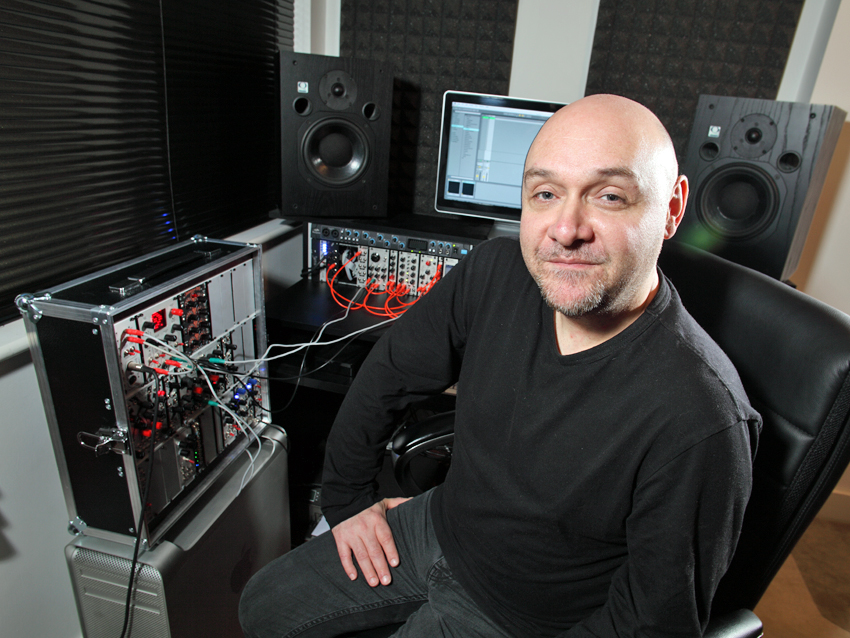
Intro
Through the early days on Transmat and Metroplex to his first releases on R&S and Planet E, Kirk DeGiorgio’s career has its roots in the golden age of Techno. Before putting out some of the earliest Aphex Twin records and being instrumental in the development of Techno in the UK, Kirk came to synths and sequencers via Soul and Funk and teamed up with revolutionary artists like The Black Dog, Tom Middleton, Carl Craig and Derrick May.
When he found Techno to be losing its musicality he was drawn to Drum ’n’ Bass and, under his well-known As One alias, released a landmark album on James Lavelle’s Mo’Wax imprint. Over the years, his studio has adapted to his varied projects, growing and shrinking from a vintage playhouse to its current stripped-back modern state.
Now, he says Techno’s experiencing a renaissance and that music-making’s newfound accessibility is the reason behind it. We travelled to his studio to see more...
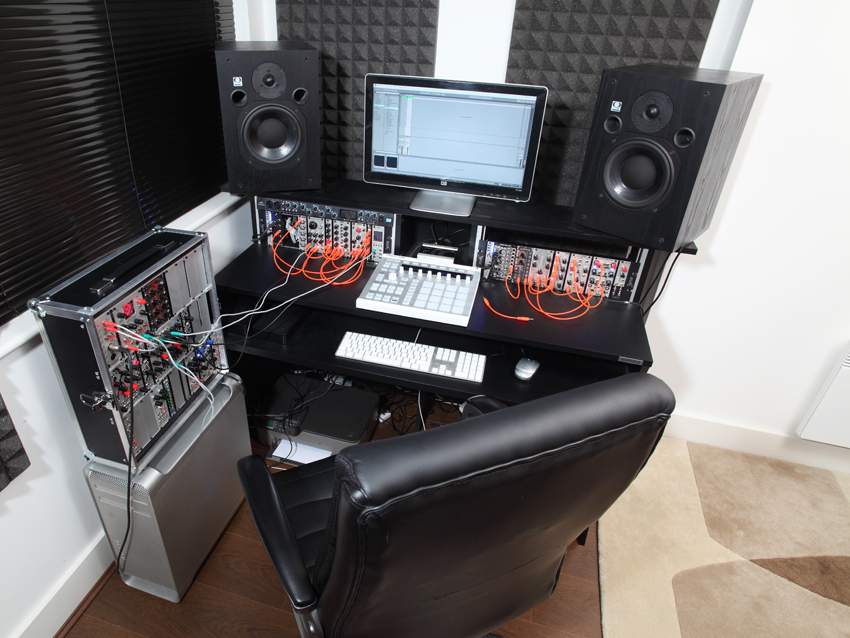
The studio
“I’ve adapted my set-up depending on the project I’m working on. When I started working with The Beauty Room, which was a more Pop-y almost over-produced sound, I had a lot of expensive outboard EQ and compressors.
"I also changed my set-up when I started making Drum ’n’ Bass – Recycle had just come out and was incredible. I needed a really good sampler, too, so I got the E-mu E4, which was the high-end sampler. A lot of Drum ’n’ Bass producers were using the Roland S760 at the time – people were moving away from the Akai’s crunchy, lower bit-rate sound.
“With the Mo’Wax deal, I kitted out my studio with vintage keyboards like a Fender Rhodes, a Clavinet and a Wurlitzer. I had a whole lot of great hardware effects like the Ursa Major Space Station and Moog parametric EQ and in 1998 I got my first modular system, which was a Doepfer. I had it for about six weeks, loved it and immediately wanted something high-end so I bought a four-panel Serge system. It was just insane, beautiful, almost digital in its precision. I had the TKB sequencer and three panels and that was my set-up for years.
“After Mo’Wax I got signed to Island and that was a big deal. I started getting asked to make music for TV commercials and was doing really well out of that and investing it all back into the studio. I bought a full Pro Tools rig – the one before it was HD. With that rig and a studio full of vintage gear, that was the pinnacle of my studio size.”
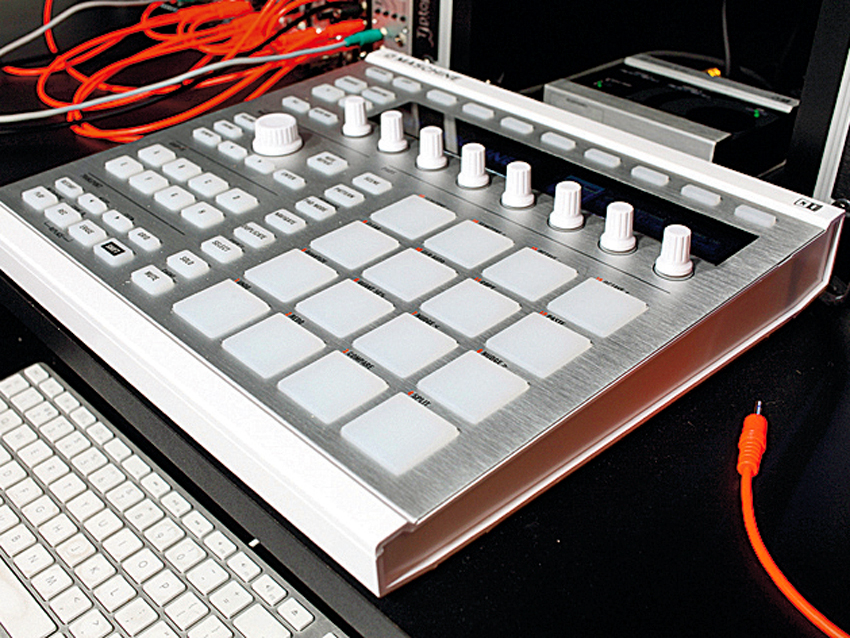
Native Instruments Maschine
“A real workhorse in my setup and so much more than a drum machine. I know my way around it well enough to do everything from the hardware unit which makes for a fast workflow that matches the ‘live performance’ feel of working within Ableton Live.”
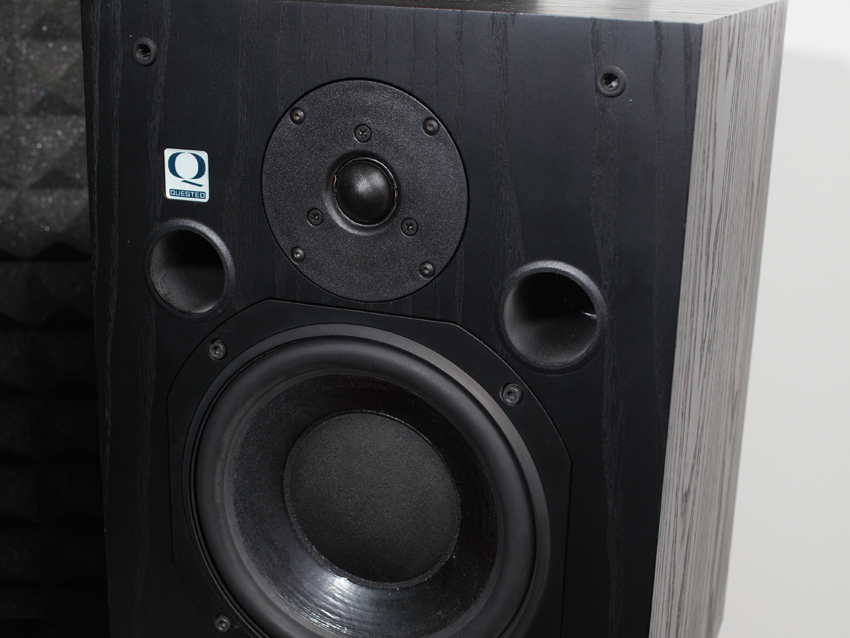
Quested Q8s
"Lifeless, dull, boring – that was my initial impression after years of using Genelecs. Now I would describe them as accurate and unflattering – which is precisely what you want from a monitor."
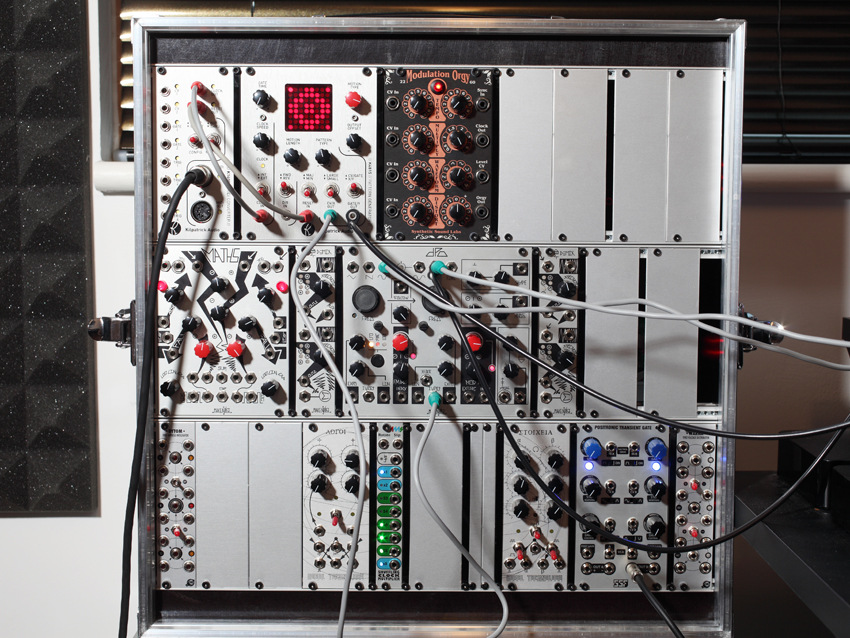
Modern modular
"The joy of modular for me is that there are no presets. Once you’ve pulled out those cables on the patch, even if you take a photo you’re never gonna get it back the way it was. I love that it’s unique. I also love the aesthetics of it all.
"If you llook at something like the Kilpatrick [Audio Pattern] Generator it’s like battleships. My girlfriend makes music and when she saw my set-up she asked, ‘Where’s the keyboard?’ Well, I’m not a musician and I much prefer using sequencers like that Pattern Generator. I can’t remember who said it, maybe it was Buchla or Bob Moog, but there’s a quote that says, ‘The worst thing that happened to synthesizers was when they put a keyboard on them’. I totally agree with that. The idea that they’re not atraditional instrument is more inspiring to me.
“I’ve got three self-contained systems and one is just for chords. It’s got a Snazzy FX Dronebank that has five triangle waves and you can come up with beautiful chords and process them through a filter, and when you sync it to the DAW you’ve basically got your own dub Techno machine. [See our video of Kirk in the studio to see the Dronebank in action]. Tip Top [Audio] have been coming out with these 808 and 909 modules and when you combine them with some of the more complex clocking modules, you can create crazy rhythms that would be pretty much impossible to play into a drum machine.
“The innovation in the Eurorack system with things like The Harvestman and their Malgorithm where you can see the sample rate and the bit-rate of an input... It’s incredible stuff. It’s not just a purist analogue thing – there’s great digital aspects. Eurorack’s still a bit expensive because it’s addictive, but I highly recommend any new producer to get into it. Even if it looks intimidating, it’s not so take the plunge. Go for it.”
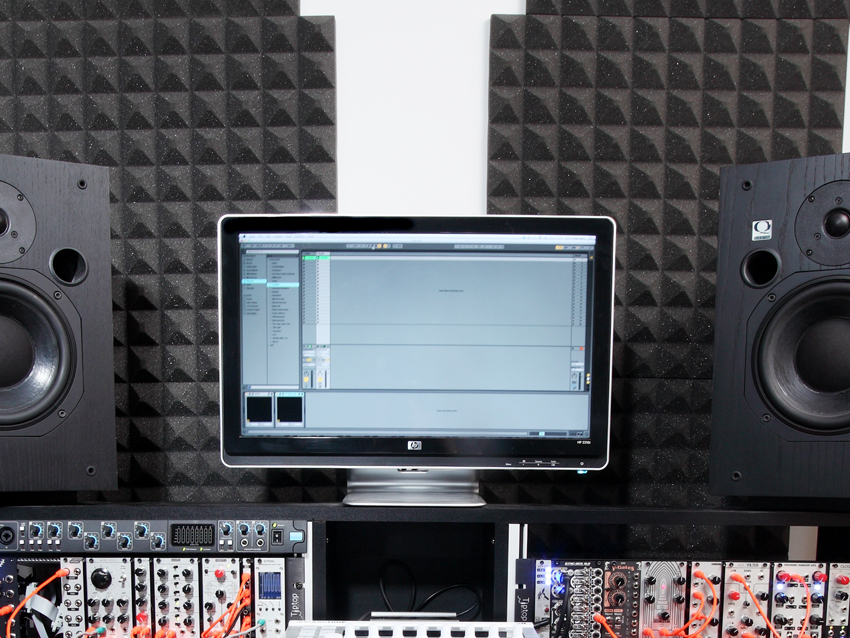
Ableton Live
“I’ve famously been an Ableton user since version one. For production, I treat it like a giant instrument. I use it to create my tracks and arrange them, getting a live feel when used with my Akai APC40. But for the final mix down – I export at 96kHz and mix in Logic 9.”
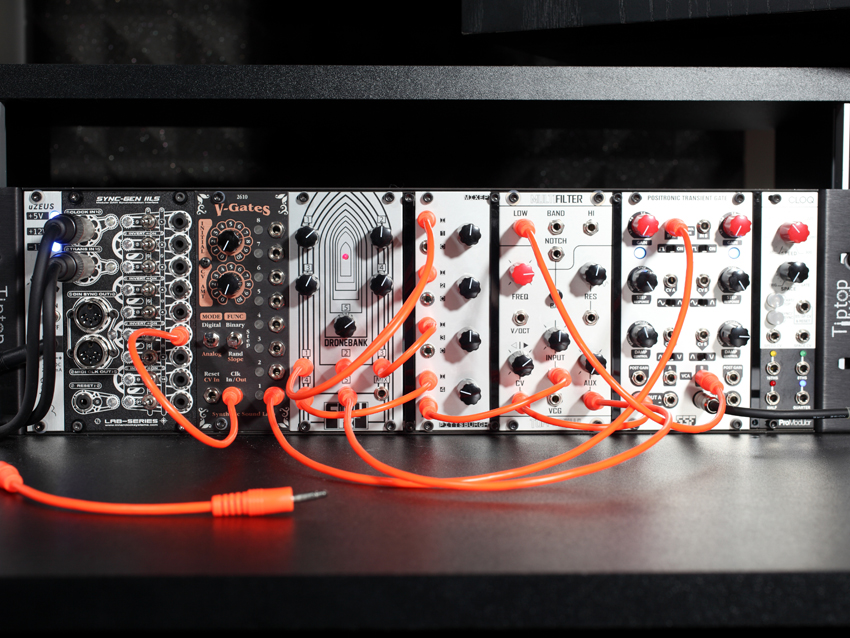
Innerclock Systems Sync-Gen II LS
“Built like a tank and manufactured for sample accuracy. It takes audio signals and converts them to clock signals for driving modular sequencers, gating envelope generators and also provides stop/start/reset commands.”
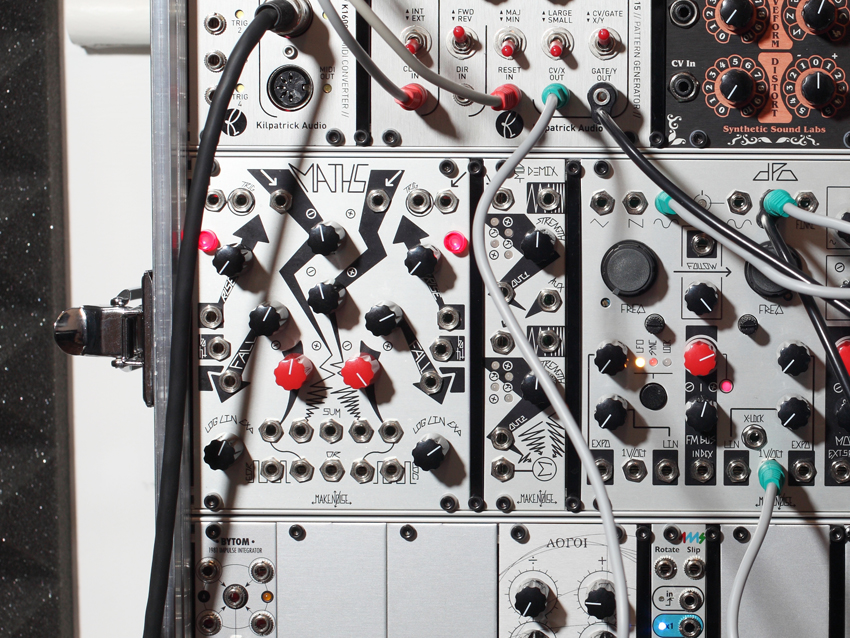
Make Noise Maths
"One of the most in-demand modules in Eurorack. I learnt modular synthesis on a Serge system which had the wonderful Dual Slope Generators which could be AR/AD envelope generators, slew limiters, crude low pass filters, self-cycling LFOs, clock dividers, etc.
"MATHS is essential all this and more. A real ‘swiss-army knife’ and essential for a Eurorack system in my opinion.”
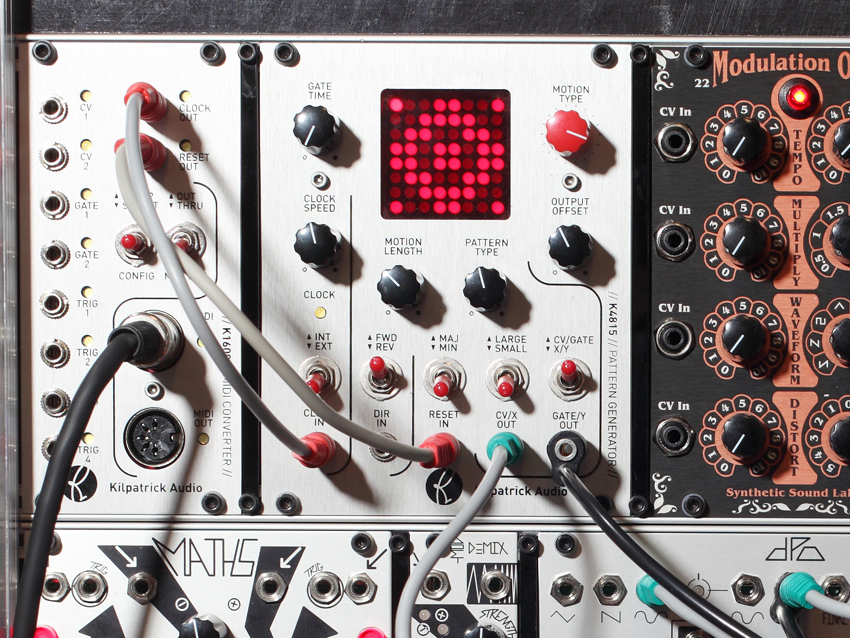
Kilpatrick Pattern Generator
“As well as being one of the most visually striking modules, this sequencer is one of my favourites for generating interesting melodies, basslines, etc. The 8x8 ‘battleships’-type display shows user selectable patterns. A moving stage selector can follow different types of motion on an X/Y axis.”
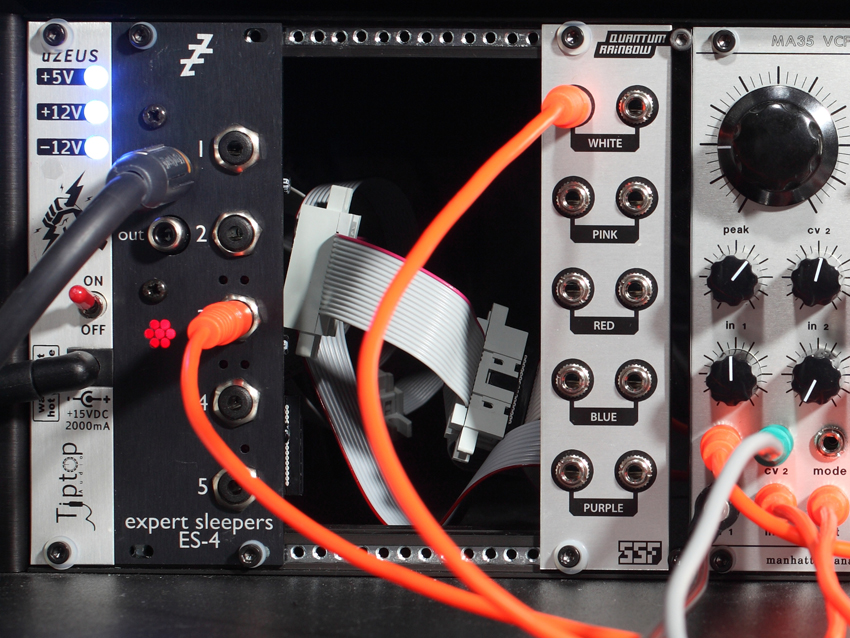
Expert Sleepers ES-4 module
"Having a modular- based studio means finding modules that allow me to have sample accurate sync with Ableton Live and Logic. The ES-4 provides an elegant solution. It self- calibrates itself to a modules particular tuning ensuring accurate pitch over several octaves and the timing is sample accurate.”
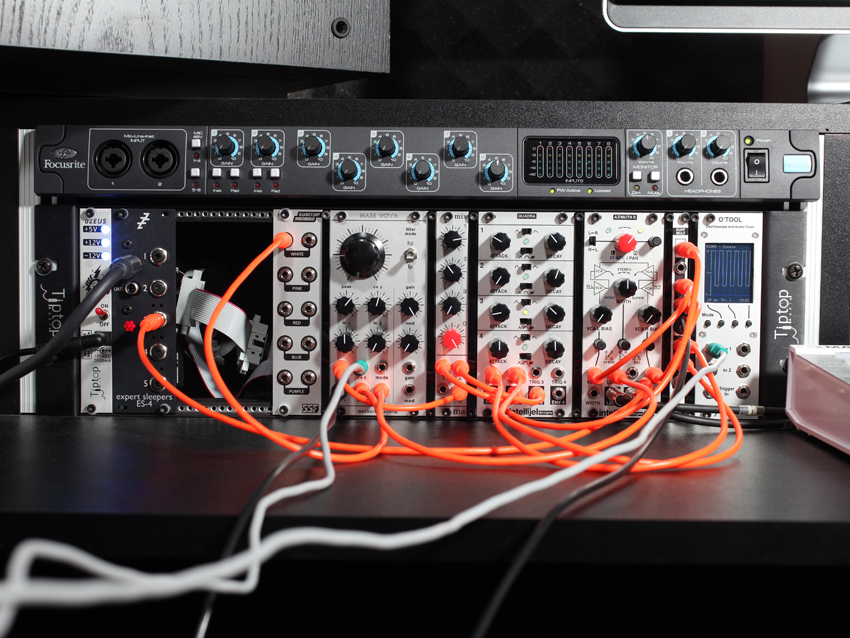
Focusrite Saffire 40 interface
“I’ve been a Prism Sound Orpheus user for a few years and that kind of quality is hard to beat. However, I now have a greater need for a USB device and digital converter technology has improved enough for me to try less expensive options."
Don't forget you can catch Kirk Degiorgio at our Producer Sessions Live producer event on 7th & 8th September 2013.
For more on Kirk’s music, take a trip to his official SoundCloud page for the latest uploads: www.soundcloud.com/kirkdegiorgio

Future Music is the number one magazine for today's producers. Packed with technique and technology we'll help you make great new music. All-access artist interviews, in-depth gear reviews, essential production tutorials and much more. Every marvellous monthly edition features reliable reviews of the latest and greatest hardware and software technology and techniques, unparalleled advice, in-depth interviews, sensational free samples and so much more to improve the experience and outcome of your music-making.











